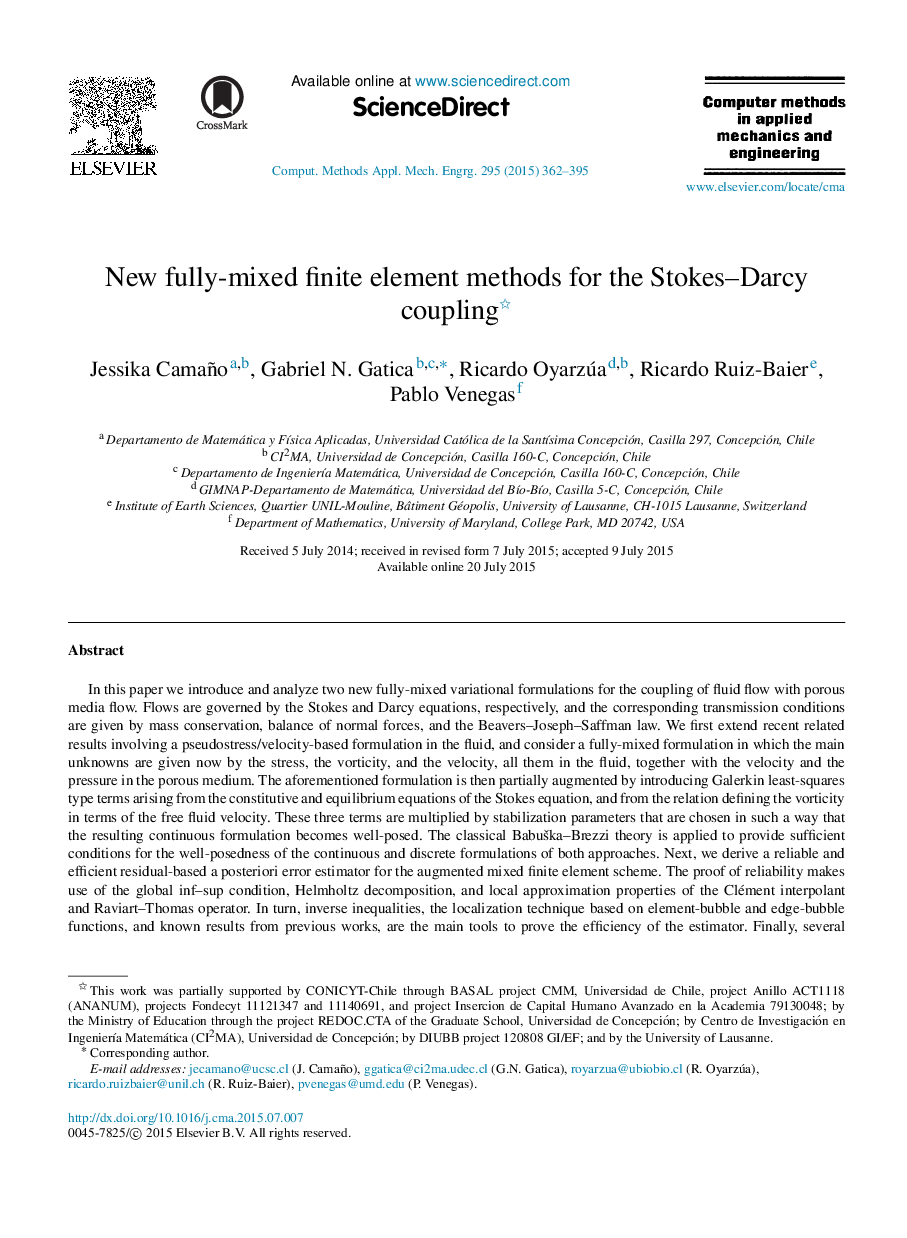| Article ID | Journal | Published Year | Pages | File Type |
|---|---|---|---|---|
| 497645 | Computer Methods in Applied Mechanics and Engineering | 2015 | 34 Pages |
In this paper we introduce and analyze two new fully-mixed variational formulations for the coupling of fluid flow with porous media flow. Flows are governed by the Stokes and Darcy equations, respectively, and the corresponding transmission conditions are given by mass conservation, balance of normal forces, and the Beavers–Joseph–Saffman law. We first extend recent related results involving a pseudostress/velocity-based formulation in the fluid, and consider a fully-mixed formulation in which the main unknowns are given now by the stress, the vorticity, and the velocity, all them in the fluid, together with the velocity and the pressure in the porous medium. The aforementioned formulation is then partially augmented by introducing Galerkin least-squares type terms arising from the constitutive and equilibrium equations of the Stokes equation, and from the relation defining the vorticity in terms of the free fluid velocity. These three terms are multiplied by stabilization parameters that are chosen in such a way that the resulting continuous formulation becomes well-posed. The classical Babuška–Brezzi theory is applied to provide sufficient conditions for the well-posedness of the continuous and discrete formulations of both approaches. Next, we derive a reliable and efficient residual-based a posteriori error estimator for the augmented mixed finite element scheme. The proof of reliability makes use of the global inf–sup condition, Helmholtz decomposition, and local approximation properties of the Clément interpolant and Raviart–Thomas operator. In turn, inverse inequalities, the localization technique based on element-bubble and edge-bubble functions, and known results from previous works, are the main tools to prove the efficiency of the estimator. Finally, several numerical results illustrating the good performance of both methods, confirming the aforementioned properties of the estimator, and showing the behavior of the associated adaptive algorithm, are provided.
